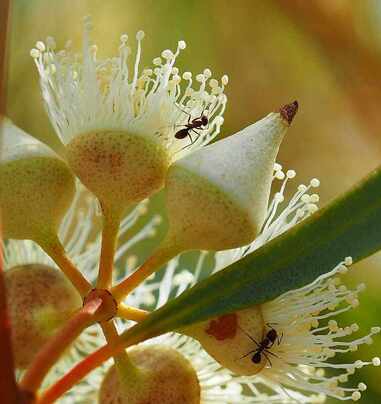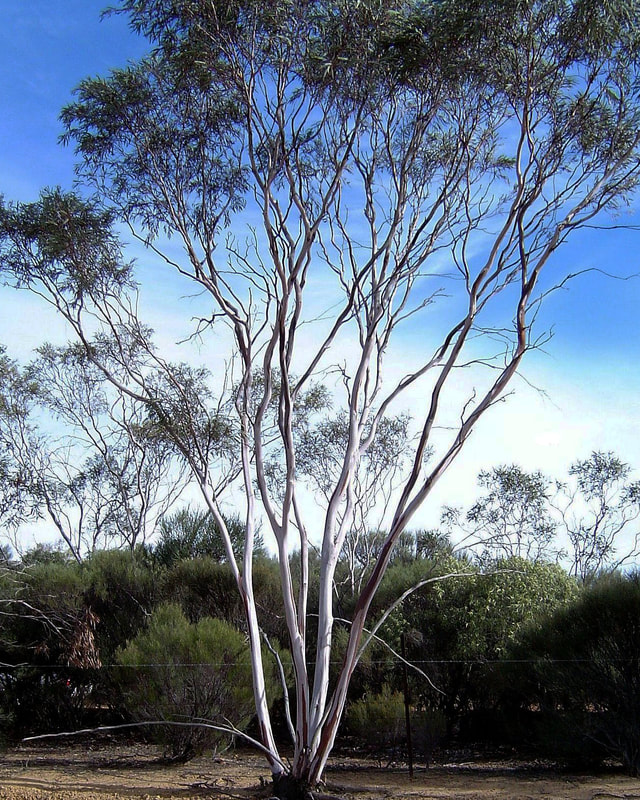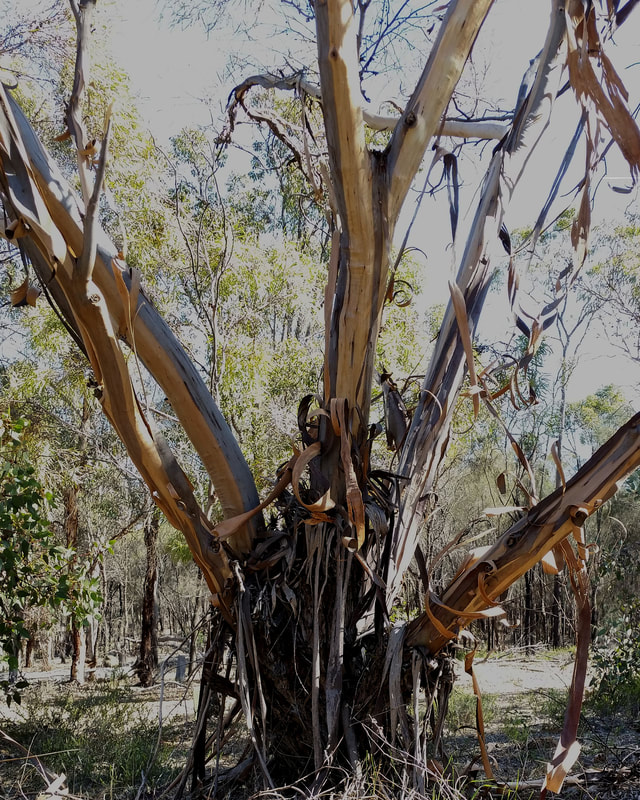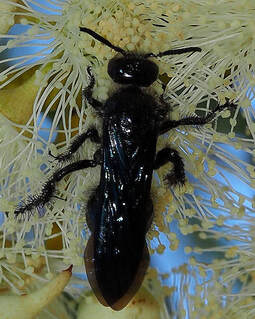 White glandular bud caps
White glandular bud caps The arboretum is a great place to see how diverse eucalypts can be, with one feature being whether/how they shed their bark each summer.
Eucalyptus leptopoda; Merredin mallee (formerly Tammin mallee, pegs 194 to 199) is common on gravel and sandplain kwongan soils in the eastern wheatbelt. These soils have just a few eucalypts because of an unpenetrable silcrete hardpan in the deep subsoil. Merredin mallees occur in spots where their roots have gone through cracks in the hardpan. They have grey/white smooth bark with darker strips of old bark. Long shreds of shed bark up to 3 metres long hang down from upper branches of plants in the arboretum, to reveal light-copper new bark that gradually turns grey-white.
Mallees are adapted to cope with regular fires by regenerating from a large lignotuber root. The ones herehave yet to develop these.They have shaggy-bark stem bases and long spindly stems.
In February/March profuse white flowers attract bees and flower wasps.
For more information on eucalypts you can’t go past the brilliant book "Eucalypts of Western Australia’s wheatbelt" by Malcolm French.
| |


